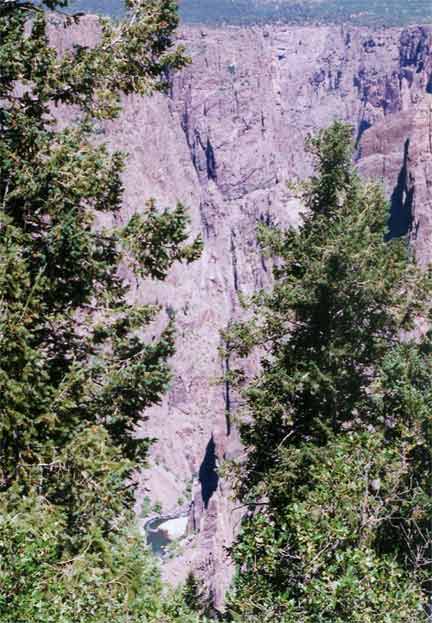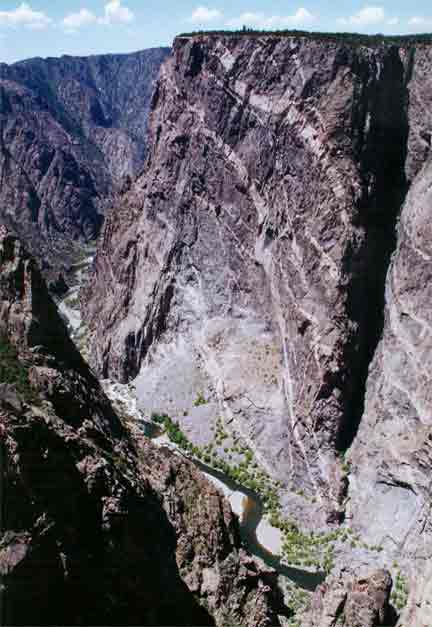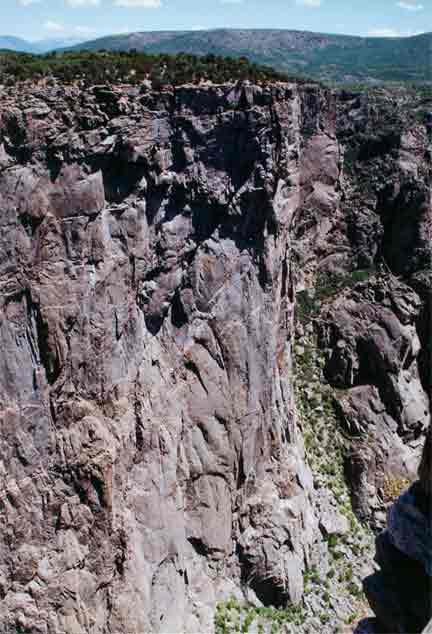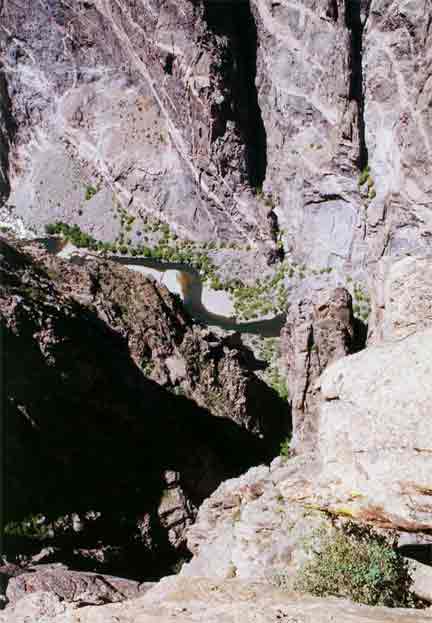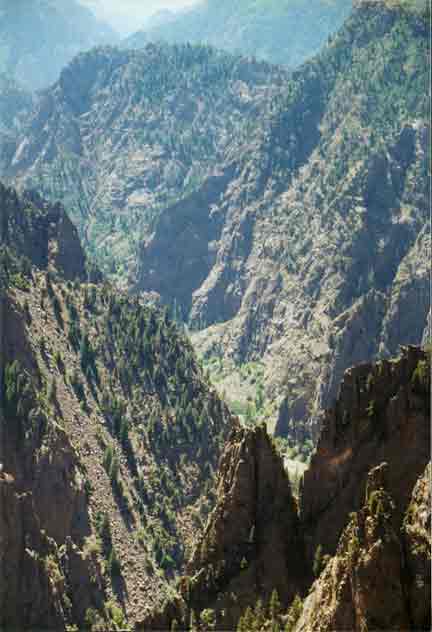The Black Canyon of the Gunnison
is a National Monument formed by the Gunnison River is south central
Colorado. It is called the Black Canyon because it is said that even at
mid day it is so dark at the bottom that one can see the stars above.
At it's
narrowest point
the Black Canyon is only 40 feet wide but 1,100 feet deep. 40 feet is
less than a baseball throw from shortstop to first base, but if you
drop this ball you'll have to go down a 1,100 foot hole to get it. The
canyon is 48 miles long and 2,722 feet deep at the deepest point. In
contrast, the Sears Tower, the tallest building in the world, is 1,454
feet tall. Yes, that is a river down there and although you probably
can't see them without the aid of binoculars, there are people camping
on the sand bars in the photo below right.
